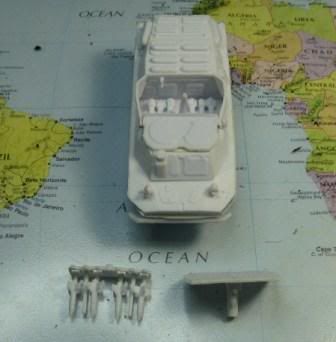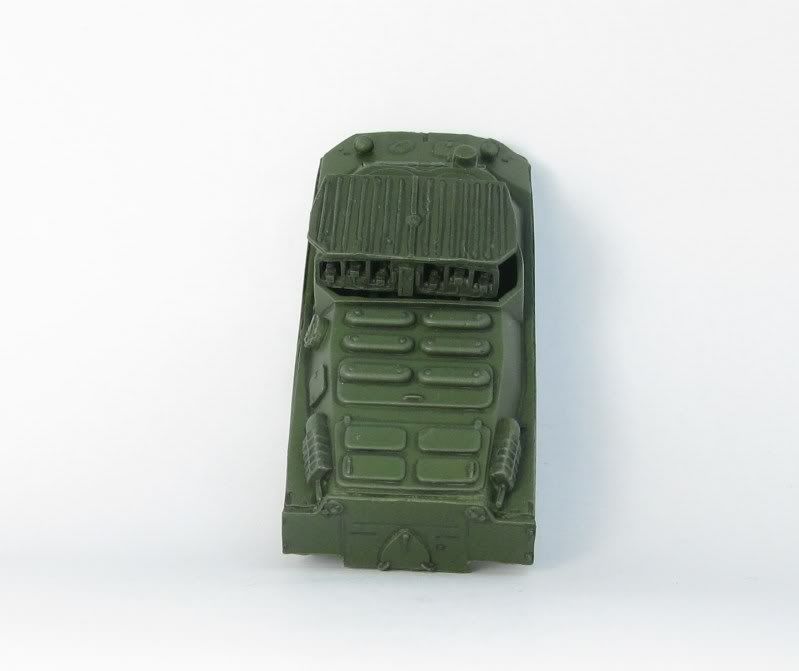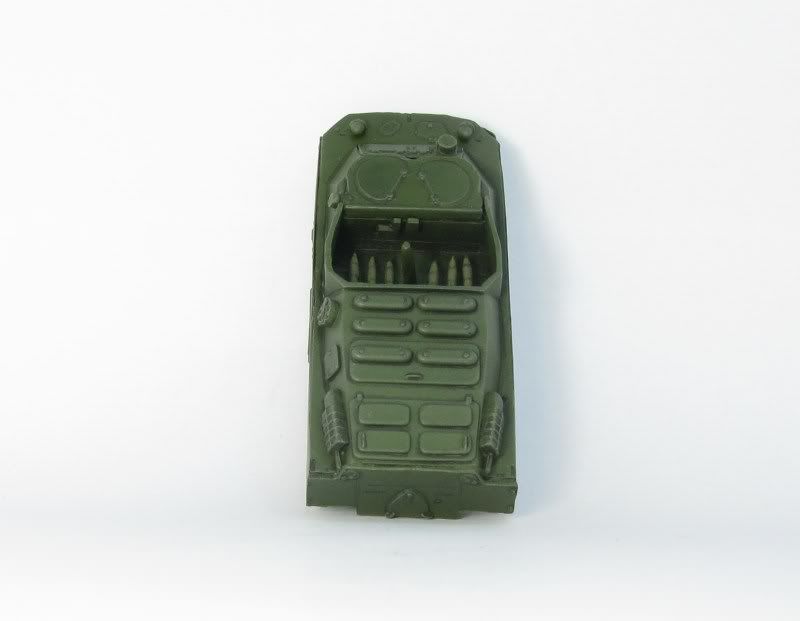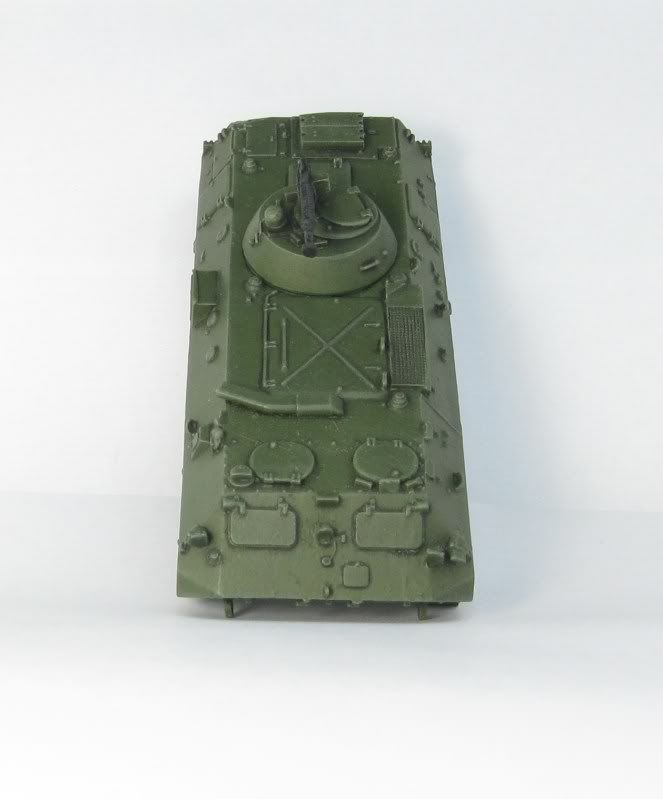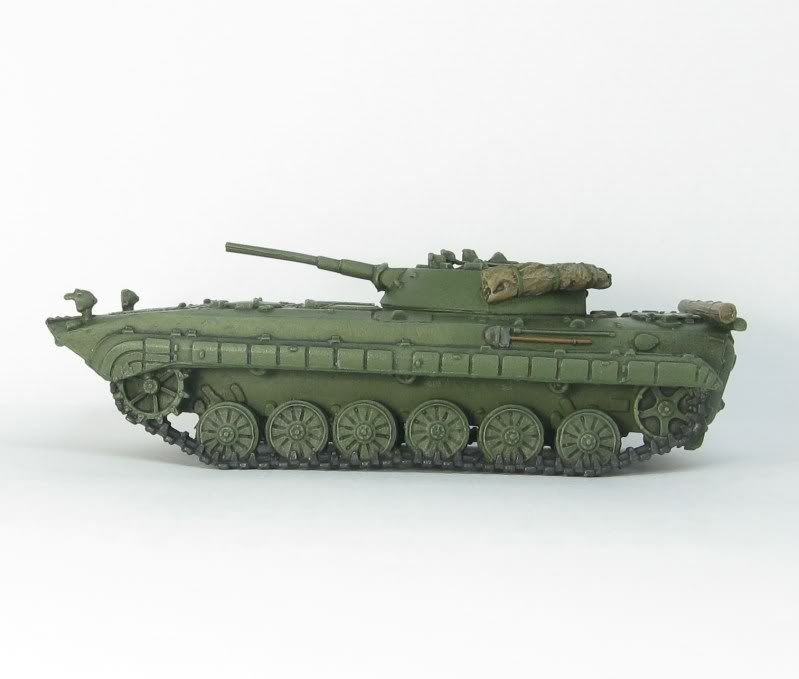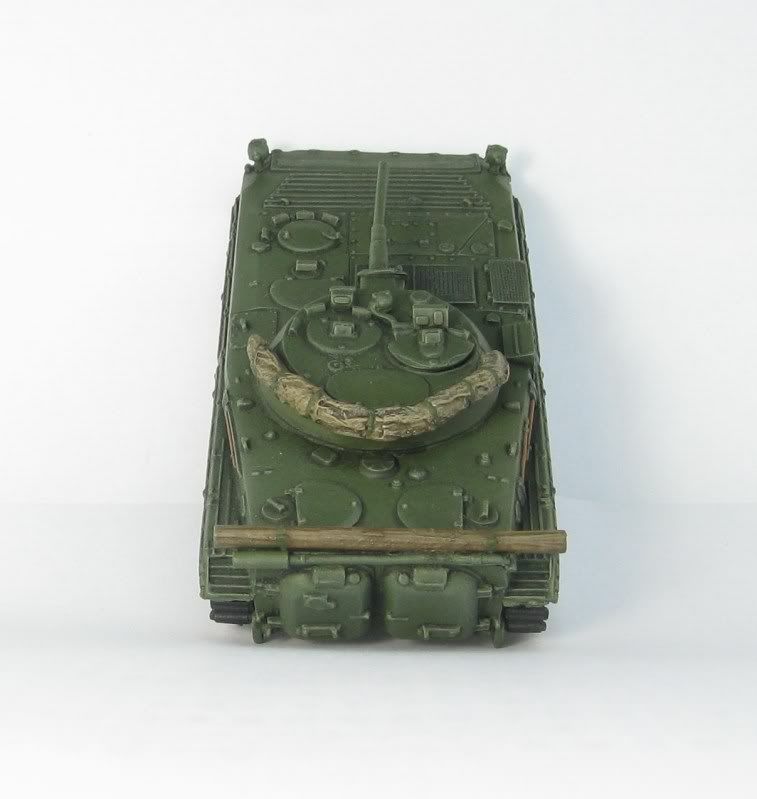According to the US Army’s FM 100-2-3 “The Soviet Army – Troops, Organisation and Equipment - the SA-8/GECKO is a two-stage, solid-fuel, short-range, low-altitude, all-weather SAM system. The unique six-wheeled SA-8 TELAR is amphibious and has a large boat like bow. The SA-8b system (the one I made) carries six canister-launched missiles and has the on-board LAND ROLL target acquisition and fire control radar system, mounted on the front of the turret. The LAND ROLL system consists of a folding surveillance radar antenna located atop the launcher, between the two pairs of launch rails, and a large tracking radar dish flanked by two smaller command radar dishes forward of the launch rails.
The SA-8 has a slant range of 12 kilometers and a kill zone of approximately 10 to 12,000 meters in altitude. Compared to other Soviet air defense systems, the SA-8 has several advantages: it is fully self-contained, highly mobile, amphibious, and air-transportable.
The surveillance radar of the LAND ROLL system probably operates in the H band and has an effective range of around 30 kilometres against a typical target. Its antenna folds down behind the launcher, enabling Soviet transport aircraft to airlift the system. The tracking radar is of the pulsed type; it probably operates in the J band with a range of 20 to 25 kilometres. The two I-band guidance radars make it possible to launch two missiles at the same target, each one responding to a different frequency to frustrate ECM. A low-light-level television camera mounted on top of the fire-control assembly is used for optical target tracking.
The use of canisters on the SA-8b system has three advantages: it further increases the number of ready missiles, it improves missile survivability, and it facilitates resupply and reloading.
The SA-8 system is organic to the SAM regiment of some Motorised Rifle Divisions and Tank Divisions. An SA-8 regiment has a total of 20 TELARs organized into five batteries of 4 TELARs each. The regiment also has 10 resupply vehicles, based on the same chassis as the TELAR, which carry additional missiles and a crane for transloading.
Besides being susceptible to suppressive fires and ECM, the SA-8's exposed radars and wheels are especially vulnerable to artillery fires.
The Soviets introduced the SA-8a in 1974 and first publicly displayed it in 1975. The SA-8b variant was first seen in 1980.
You can find more info on the Wikipedia SA-8 page here
REVIEW
This is a Cromwell Models resin SA-8 Gecko kit. Sad as this sounds, it was love at first sight when I saw this model and I was very happy that my friend Simon just happened to have one spare. For some reason I’ve always had a thing for Soviet SAM systems… weirdo!
The TELAR basically comes as on very crisp piece, with just what I imagine is a blast shield, to be added to the back of the vehicle.
The missile mount needs to have the 2 small command radar dishes attached, the two ‘pods’ of three missiles attached, the small surveillance radar (2 pieces) put together and attached and another small piece attached to the top of the target acquisition and fire control radar system.
It all fitted together very well, and despite one thing being broken, I was readily able to fix this without any problems.
My only negative with the kit is that it comes with no instructions, and whilst I was able to find some examples online to help, some basic instructions would have been helpful.
All-in-all, I’d still give it 9.5 out of 10.
PAINTING
Same old same old here, I’m afraid. Only significant difference is that I painted the windows with GW Hideous Blue (I think) and added some Vallejo white for a highlight. Weathering is with Tamiya Weathering pastels.
So here are some pictures of my little beloved Gecko
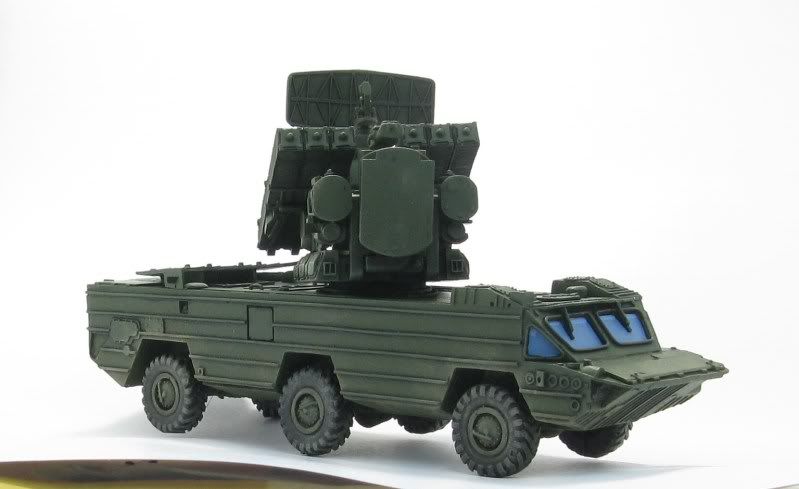
FRONT VIEW
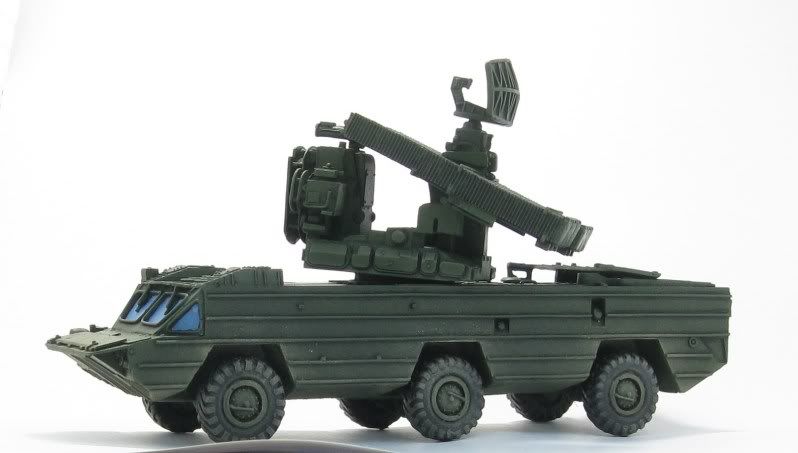
SIDE VIEW
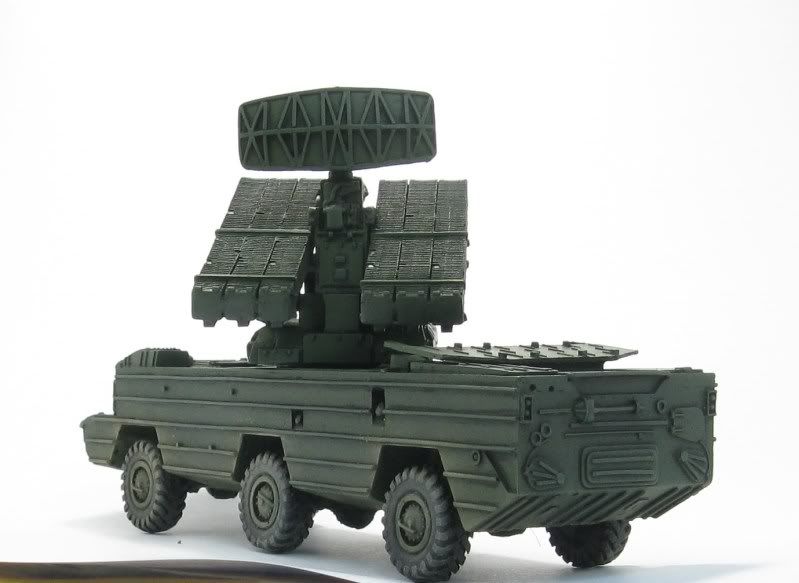
REAR VIEW
As per usual - I've also included some youtube clips of the Gecko in action
A Gecko cruising around
Not a bad video if you can get bad the head banging music and non HD.
A fairly long winded video on Greek Geckos - much better HD quality and some views inside the vehicles.
So that's about it.
Have fun
Richard
